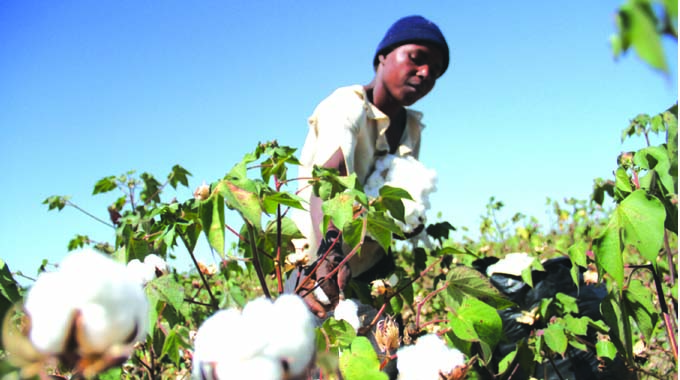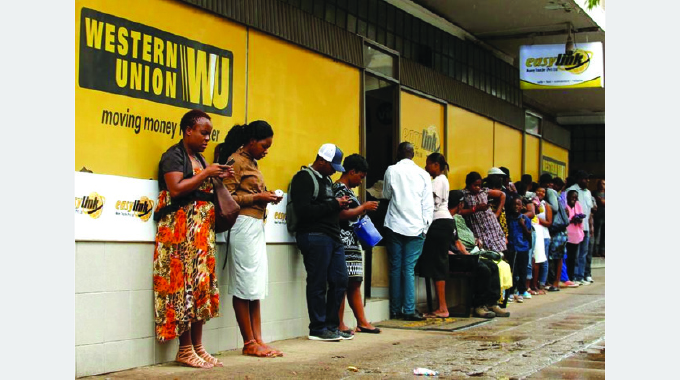EDITORIAL COMMENT: Marketing co-ops way to go as villages develop

Farmers, and especially small-scale and smallholder farmers, can be fleeced by middlemen and lose most, if not all, their profit and yet the alternatives are difficult to arrange and need a lot of hard work by farming communities to deal with the final main customers.
For most major crops small-scale farmers now can deal with the main customer. Grain and oil seed producers can deliver direct to their nearest depot of the Grain Marketing Board, and often they have a GMB contract in the first place so need to do so.
Cotton farmers can deliver to their Cottco collection point, and again are usually contracted to do so.
Small-scale tobacco growers are almost certain to be under contract to the merchant of their choice.
In these cases there are no middlemen taking a slice of the revenue, unless the farmer breaches their contract and indulges in side marketing. By delivering to the GMB, Cottco or anyone else who provided the inputs and signed them to a contract the farmer gets the full price. Contractors in these areas are normally registered and approved by a regulator, with that regulator insisting on high standards of honesty and integrity.
But in a lot of other areas farmers can be at the mercy of middlemen, some of whom are respectable business people of integrity and some of them are extremely dubious. The problems could grow as Zimbabwean farmers build their businesses and expand the range of crops and livestock they grow or raise.
The first area where this is likely to be common arises from the village borehole scheme now in progress by the Government with the first batch of rigs already out their drilling and more batches on the high seas or on order.
One of the benefits of these borehole schemes is that the village will not only have adequate supplies of potable water for household use, and have the supply right there in the village, but there will be enough for irrigation of a village vegetable garden, providing more food for the tables of the villagers but also a surplus for sale.
Other programmes introduced by the Second Republic, or started by small-scale farmers on their own, are orchards for growing fruit, again partly to satisfy demand by farming households and their neighbours, but also for sale further afield.
And the list is growing.
The idea of a middle income small-scale farmer is not a family that plants maize in summer, along perhaps with some millet and a few sunflowers, but a household that is involved in a wide range of crops, using their land holding, small as it might be, to the full to have a respectable income.
The chairman of the National Association of Agricultural Show Societies, Mr Godfrey Mavankeni, suggested at the weekend that communal and other small-scale farmers, such as the large number of A1 resettled farmers, needed to work out how they could reach their customers directly rather than rely on middlemen, and then work out what they needed to grow and harvest to satisfy those customers.
This is obviously a lot easier said than done. But in highly developed countries that still have their farmland divided into small but highly productive farms, with their farmers now earning very respectable incomes and maintaining high standards of living, solutions have been found.
One is the development of co-operatives for marketing and customer relations and to bulk produce for transport to towns and cities and other concentrations of customers. This is specially critical for fresh foods and crops with a short shelf life, such as most vegetables. The time from farm gate to customer’s kitchen needs to be as short as possible.
Farmers markets have been expanding in major towns, although the farmers who benefit the most are those with their own transport who can drive through the night and be at the market with produce picked in the last 24 hours and very fresh for the customers as they arrive. For smaller-scale and village farmers something more is required, to overcome the potential transport problems.
A very well organised co-operative, perhaps combining several villages, can have its own transport making the daily run down the line of villages and to the markets, so giving the producers the benefit of direct sales.
If the farmer markets are upgraded then farming households can start adding some processed and semi-processed foods. Anyone going to a French market, for example, will find cheeses, jams, preserves and cured meat among the vegetables and fruit, and in many cases these will be coming from a co-operative that not only sorts out the logistics but often provides the necessary guarantees of quality and the like, so customers have a point of contact.
There have been some unpleasant experiences by many when it comes to co-operatives, and co-operative officials and even their staff can be as dishonest as the most dishonest middleman. But when a co-operative is built around a community there are often safeguards where most people know each other and no just how far each person can be trusted.
And co-operatives need to be involved from the farm gate, not from the farm itself.
Each family has to be an independent producer, even if they have agreed what varieties and species they need to grow.
This avoids a lot of mistrust and also ensures that if a co-operative goes under the family still has stuff to sell through other channels.
But joining together to find the best markets, work out what those markets demand and to sort out the transport to those markets can make a lot of sense, and certainly that option will ensure that middlemen who continue in business have to compete at a very high level, and develop exceptional levels of integrity and competence to do so.











Comments